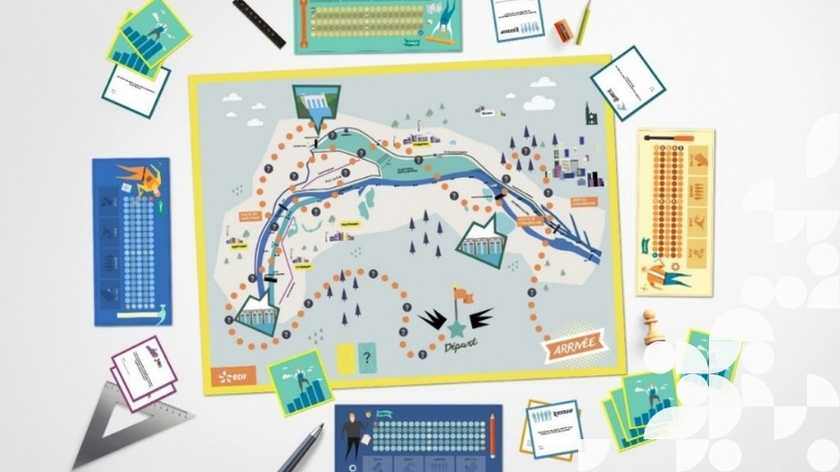Playing is the best way to learn. From a neurological standpoint, the debate has long been settled. Because it encourages diligent and prolonged practice, it shifts us from passive to active behavior. Board games inherently possess a social dimension. Therefore, to quickly enhance skills in a fun way, while fostering cohesion and enjoyment, we decided to create customized board games...
Natural turnover and significant generational turnover, the need to quickly develop skills in key roles and competencies, all while remaining true to our managerial philosophy of finding joy in work, these were the human challenges we faced two years ago.
We were determined to break away from the conventional, uninspiring PowerPoint-driven training sessions. We wanted to infuse enchantment back into our training methods.
You have to play to become serious - Aristote
Digital learning and serious games are currently in vogue. But despite the predominance of digital entertainment, board games have never been more popular, even among younger generations. They compel people to gather around a table, hence their social dimension. Moreover, they can be highly educational! So why not at EDF, to learn technical professions, reflect the reality of certain situations, experience the stress and constraints inherent in the activity... all while having fun?
That's how we embarked on creating two board games, tailored for two different populations within the team: management and on-call technicians. We, a few team members and myself, that's 2 people for the first game and 4 for the second.
The first step was defining the training objectives: what do we want to convey to the players? What knowledge, situation management, and behaviors do we want them to assimilate? What constraints do we want to reflect through the gaming experience? In other words: what kind of gaming experience do we want to design?
.jpg?width=1024&height=765&name=edf-1-1024x765%20(1).jpg)
Then comes the construction of the game mechanics, which must meet the requirements of the gaming experience. Here, we get to the crux of the matter. How many players? Will the game be individual (everyone against everyone, like the game created for our team's management), collaborative (for our technicians), team-based...? What resources are available to the players? What are the rules and procedures? What will be the source of tension or conflict, necessary to create challenge and player engagement?

As for the second game, we drew strong inspiration from the game "Pandemic" to recreate the experience of the emergence and spread of technical faults in a power production site.
The third phase involves prototyping and testing the different components by colleagues. As with any design process, there are loops of improvement like "test & learn." The goal here is to calibrate the different variables and ensure that the game meets all the needs!
The finalized prototype is then passed on to a graphic designer, who takes care of formatting and physical production, with the idea of having a finished product and professional materials that make people eager to play!
The design process typically takes around 2 to 3 months (with daily tasks), then at least 1 month before having the finished product in hand.


As for implementation, there's no need to convince the employees given their age. However, I did receive some rather skeptical feedback from other teams. Which is a shame: the impacts are more enjoyment and excitement for regular training, and more effective onboarding for new hires.
To learn more about EDF's Opale approach, there's a article that discusses it here!




